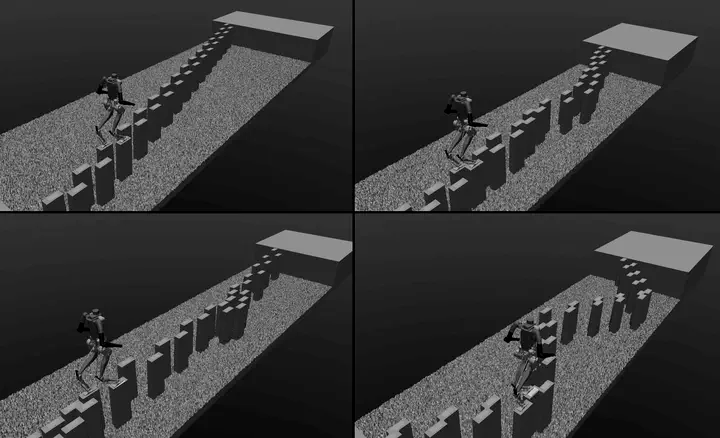Adaptive Step Duration for Precise Foot Placement: Achieving Robust Bipedal Locomotion on Terrains with Restricted Footholds

Abstract
Traditional one-step preview planning algorithms for bipedal locomotion struggle to generate viable gaits when walking across terrains with restricted footholds, such as stepping stones. To overcome such limitations, this paper introduces a novel multi-step preview foot placement planning algorithm based on the step-to-step discrete evolution of the Divergent Component of Motion (DCM) of walking robots. Our proposed approach adaptively changes the step duration and the swing foot trajectory for optimal foot placement under constraints, thereby enhancing the long-term stability of the robot and significantly improving its ability to navigate environments with tight constraints on viable footholds. We demonstrate its effectiveness through various simulation scenarios with complex stepping-stone configurations and external perturbations. These tests underscore its improved performance for navigating foothold-restricted terrains, even with external disturbances.